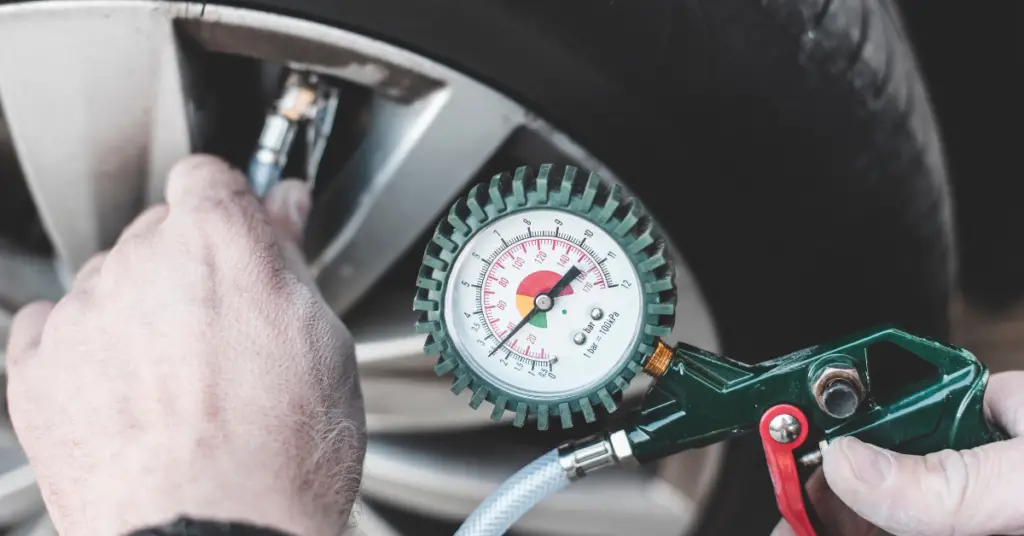One of the simplest and most effective steps you can take to prevent global warming is very simple: keep your car tires properly inflated.
According to the American Automobile Association, about 80 percent of cars on the road have one or more tires under-inflated.
Under-inflated tires can cut fuel economy by up to 2 percent per pound of pressure below the recommended level. Basically, when tires are under-inflated, they require more power (and thus more fuel) to rotate.
Properly inflated tires are safer and last longer, too, so preserving them will also be good for your budget. In addition to decreasing fuel economy, underinflated tires cause imprecise handling and premature wear at the edges of their tread, and they can overheat and fail at highway speeds.
On the other hand, overinflated tires cause a rougher ride and premature wear at the center of their tread. Tires typically lose about one pound or 2 percent of air pressure per month with normal driving (especially after hitting pot holes or curbs), permeation, and seasonal changes in temperature.
Tires actually lose or gain a pound of pressure with every 10-degree change in outside temperature, and additional changes can result due to altitude. It is every driver’s responsibility to monitor and ensure correct tire pressure.
Your simple task is this: Check the pressure of your tires (including the spare) when the tires are still cold and haven’t been warmed up by driving. Adjusting your tire pressure takes less than a minute per tire and is an easy and empowering way to reduce global warming.
Visit one of the many gas stations with pressurized air pumps for filling tires, and begin:
First determine your target inflation pressure number (in pounds), as recommended in your car owner’s manual or from the tire information label that may be located in your glove box, on your door jamb, inside your fuel door, or on the underside of your trunk’s lid. (Note: the inflation pressure number indicated on the tire’s sidewall may not be the correct pressure for your car.)
Simply unscrew the plastic cap from the tire’s air valve, insert the air gauge into the valve, and check the current pressure. Add air by pressing the air tube lever while holding it firmly in the tire air valve.
Remove air by releasing the lever and pushing on the needle located in the tire’s air valve. A hissing sound, along with the pressure gauge reading, will let you know air is being released.
Replace the cap on the air valve once the gauge indicates the tire is properly inflated. And you’re done!
Get into the habit of checking and adjusting your tire pressure at least once a month. This step is so simple you might forget it, but don’t.
You can also purchase an inexpensive tire pressure gauge to check your tire pressure at home. If we all take this simple step, we will make a significant impact and will increase our gas mileage by around 3.3 percent, saving many thousands of barrels of oil daily, which means fewer greenhouse gas emissions will be turning up the global heat.
Car manufacturers and legislators, now aware of the importance of correct tire pressure, are making it even easier for consumers to keep an eye on their tires’ air pressure.
The National Highway Traffic Safety Administration has also passed legislation that requires all new passenger vehicles to be equipped with tire pressure monitoring systems in 2008.
The legislation doesn’t go far enough, as it only requires the monitor to notify the driver when a tire is under-inflated by 25 percent below the recommended level; however, it is definitely a step in the right direction.

Erzsebet Frey (Eli Frey) is an ecologist and online entrepreneur with a Master of Science in Ecology from the University of Belgrade. Originally from Serbia, she has lived in Sri Lanka since 2017. Eli has worked internationally in countries like Oman, Brazil, Germany, and Sri Lanka. In 2018, she expanded into SEO and blogging, completing courses from UC Davis and Edinburgh. Eli has founded multiple websites focused on biology, ecology, environmental science, sustainable and simple living, and outdoor activities. She enjoys creating nature and simple living videos on YouTube and participates in speleology, diving, and hiking.

